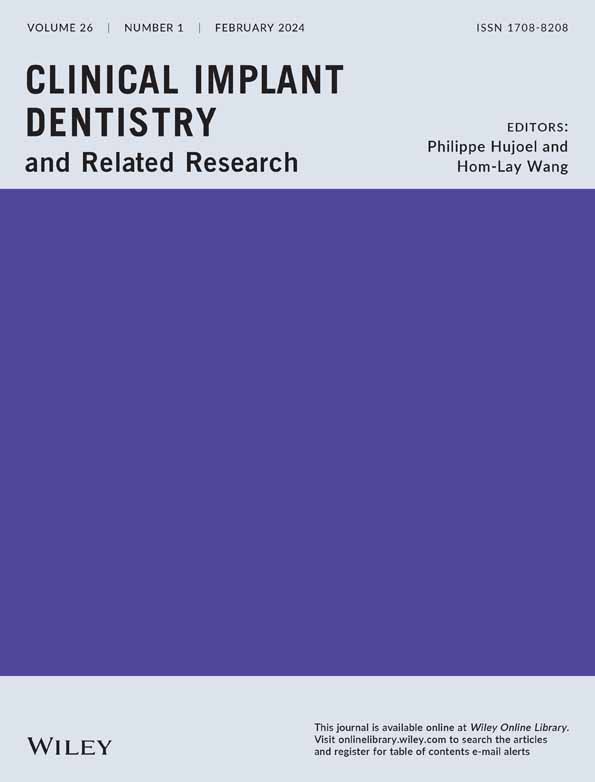The transalveolar approach with the small segmentation method for inclined maxillary sinus floor elevation: A retrospective study
Abstract
Objective
To evaluate the clinical outcome of the transalveolar approach with the small segmentation method for inclined maxillary sinus floor elevation.
Methods
Sixty-one patients with an inclined maxillary sinus floor (tilt angle ≥ 10°) and insufficient residual bone height in the posterior maxilla were included and grouped according to the tilt angle of the sinus floor, with group A having patients with the tilt angle ≥ 10° and ≤ 30° and group B having patients with the tilt angle > 30°. After completing sinus membrane elevation and bone augmentation using bone substitute materials, the implants were inserted at the same appointment, and the restoration was completed after 5–6 months of osseointegration. The preoperative sinus floor level and sinus floor elevation achieved postoperatively were assessed and recorded. At pre- and post-operative timepoints, the sagittal plane of the cone beam computed tomography was used to evaluate the bone height changes at the peak, middle and valley points in the slope segment intended for implant implantation.
Results
Osseointegration was evident in all 61 patients, and the final restoration was completed with functional loading. After assessing the normality and homogeneity of variance, two-sample t-test or nonparametric tests were employed to estimate the differences in the bone height changes. The degrees of freedom (df) for this analysis were 59. The elevation attained at the middle point in groups A and B were 6.71 ± 1.38 and 5.75 ± 1.56 mm, respectively, demonstrating a significant difference (p < 0.05). Furthermore, at the peak and valley points, group A exhibited bone height changes of 5.79 ± 1.74 and 6.06 ± 1.45 mm, respectively, compared to group B with changes measuring 4.63 ± 2.18 and 5.58 ± 2.39 mm, respectively, with no significant difference in the two groups (p ≥ 0.05). The prevalence of intraoperative sinus membrane perforation was assessed using the chi-square test. It was found that four cases in group A and five cases in group B experienced sinus membrane perforation, with no significant difference in the two groups (p ≥ 0.05, df = 1).
Conclusion
The transalveolar approach using the small segmentation method suggests a promising approach for elevating the inclined maxillary sinus floor.
CONFLICT OF INTEREST STATEMENT
The authors declare no conflict of interest.
Open Research
DATA AVAILABILITY STATEMENT
Access to the data could be requested by contacting the corresponding author.




